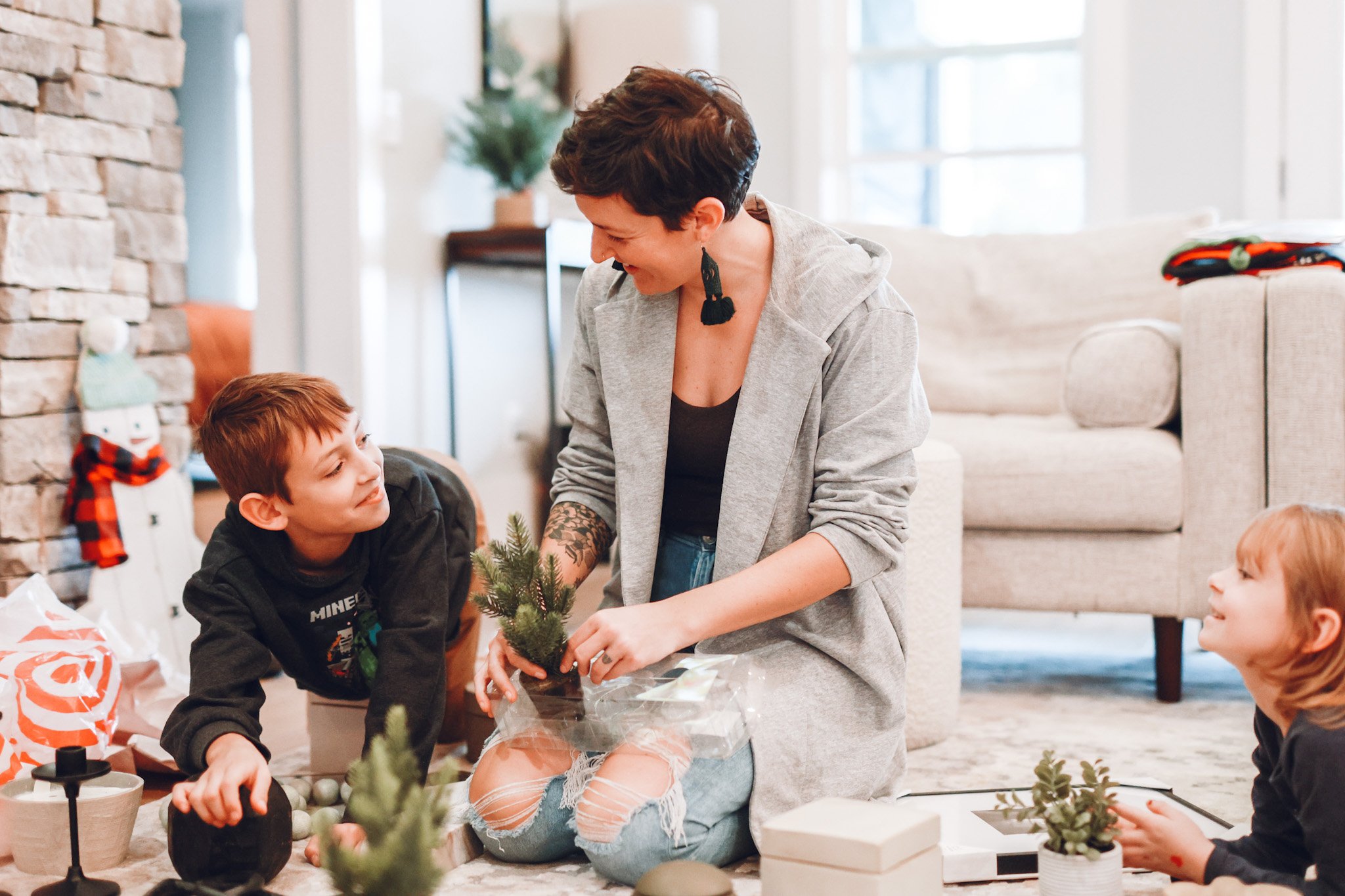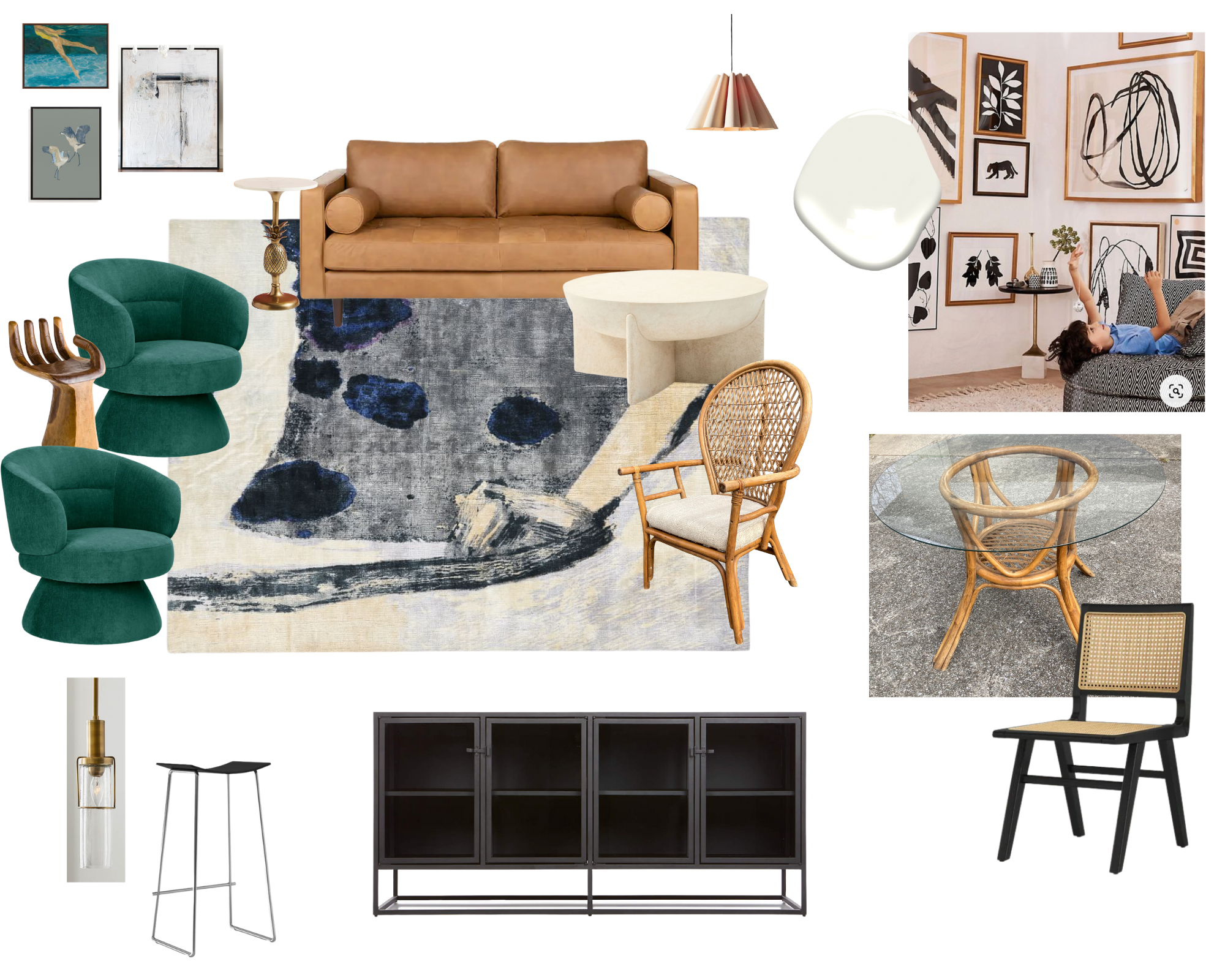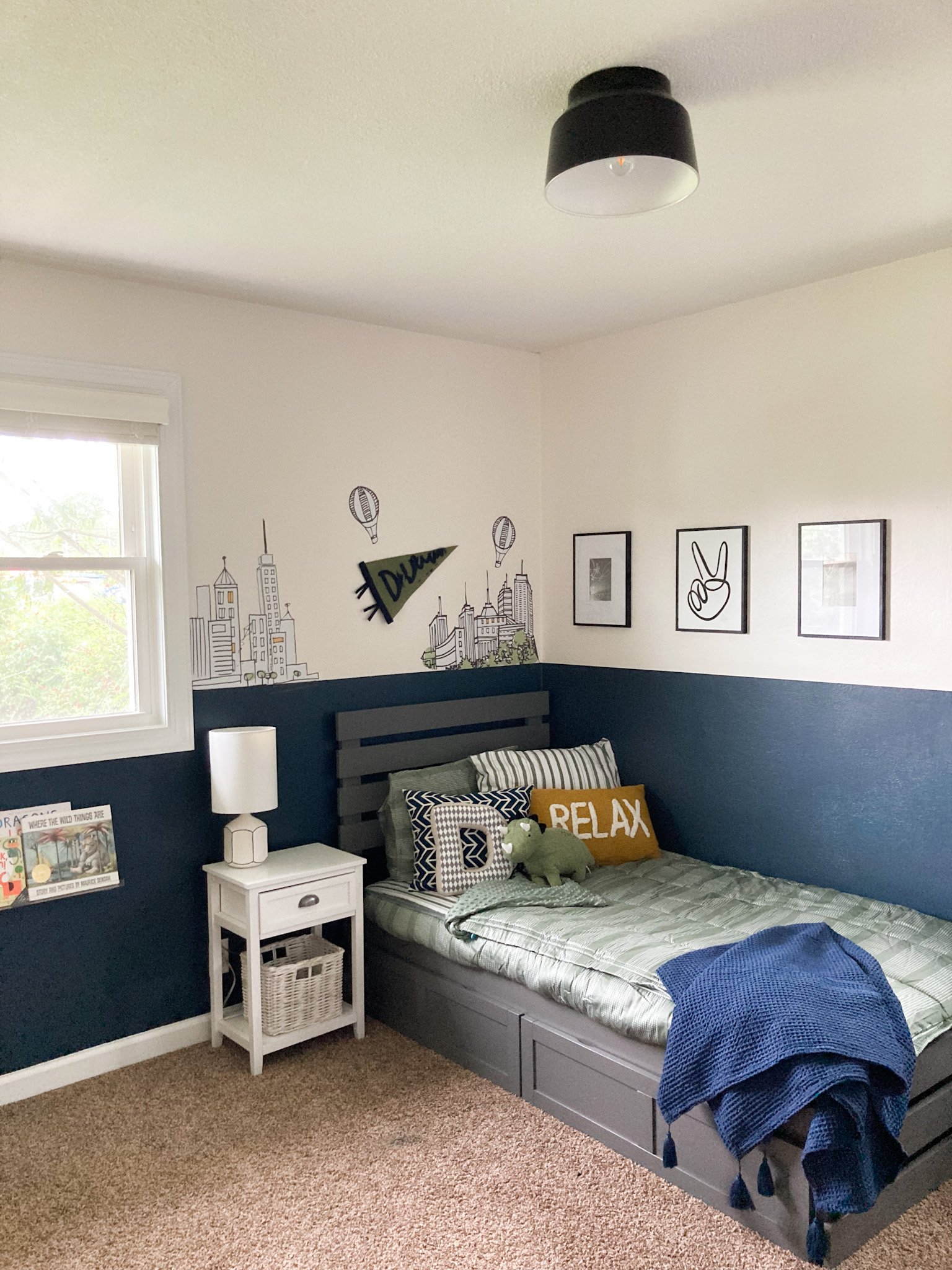How to Get Kids Involved in the Design Process (without losing control)
When sharing the news of our big move (more on that here) with our kiddos, I knew there would be a mix of emotions. Luckily, they love the beach and knew we had been working towards this dream for quite some time, but they of course all still feel a little sad about leaving friends, family, and our home. We’ve had lots of conversations about all the emotions involved in this big of a transition and overall they are doing so well.
Maybe I’ll share more on how I’ve tried to make this transition as smooth as possible for their little hearts in another blog post, but today I want to share just one of the ways we’ve been able to lean into the excitement of the move: NEW ROOMS!
Our boys currently share a bedroom so the fact that everyone will have their own space is a huge win and is a big reason we pursued the house we did, but I also want to use this opportunity to let them really put their mark on their spaces. Especially for our almost 10 year old, this feels like a great time to let him create a space that feels cool, a little bit grown, and true to who he is right now. With that in mind, I of course need the kids involved in the design process, but mom still needs veto power. (Look, I’m not going to create a Pokemon room - it just ain’t gonna happen. Bless those of you who can release all control like that…I’m just not that girl.)
I’m a designer, content creator, and slightly controlling so needless to say, I’m gonna have some thoughts about their bedrooms. So, how do I get this kids involved in the design process without losing control? Here are my best tips:
1. CREATE DESIGN BOARDS
Kids typically need to see what you’re suggesting so using a simple, free tool like Canva is a great way to start pulling their ideas and yours together in one place. I have every room of the house set up in a Canva document so we can see how things connect to on another and it is so helpful.
My oldest even made his room paint color selection based on a chair I have pulled for our living room design. He loved hearing how having that paint color in his room will help create a cohesive design for our home and it’s honestly a gorgeous color that I think will suit his space well.
Living Room Starting Design
Son’s bedroom starting design
2. CELEBRATE THEIR IDEAS
Kids get excited about doing things well so speak positively about their ideas. If an item they want for the room doesn’t suit your overall home goals tell them how great of an idea that is and then show a similar option and explain why it would work better. Often times they will see the vision and love that they were part of the conversation.
Example: My daughter started out saying she wanted a light blue room, but as we plugged in some options it wasn’t jiving with the rest of the home color scheme. Rather than saying no to blue, I asked what she thought about creating just an accent wall using the bold blue/teal color from the dining room. She happily agreed and we both think it will look lovely.
Dining Room starting design
Daughter’s room starting design
3. CONSISTENTLY REMIND THEM THAT THIS WILL TAKE TIME
Unless you’re one of the lucky few that can buy absolutely everything for your home all at once, you’ll likely be making changes over time. Setting up appropriate expectations for your kids will not only save your sanity, but it will also show them the value of saving and planning to achieve the home you want. (A lesson many adults could probably benefit from as well.)
An easy way to run a project off the rails is to not consider your budget. Remind your kids as you plan that they may have to be patient to create the space they want, but having a goal vision is a great way to make sure you don’t buy something that it’s necessary. Allow them to dream, but provide a fair dose of reality to keep from disappointment.
4. CONTINUED CONVERSATIONS
Look, depending on the day my youngest’s favorite could be pink, red or green. Kids tend to change their minds a lot. Having continued conversations about their dream room is really important (and fun!).
I’m constantly asking them things like:
What’s the most important thing you want in your room? *Answers: Fisher - bean bag chair; Emmy - art desk; Jace - a table for his water cup
What about your room are you most excited about?
What do you think about _________ idea?
Allow this planning to be a fun way to chat with your kid(s) and learn more about their preferences. It’s been so much fun to listen to them dream and plan and I think once they’ve settled into their spaces they will each have a bit of pride for what they helped to create.
xo, Robin








